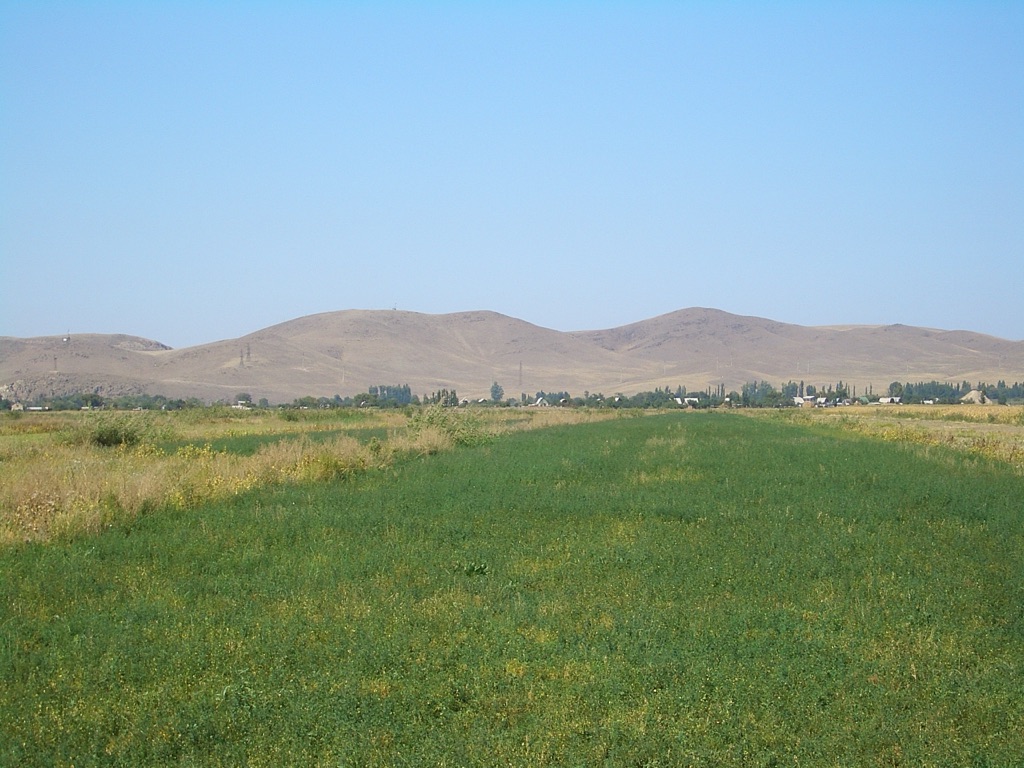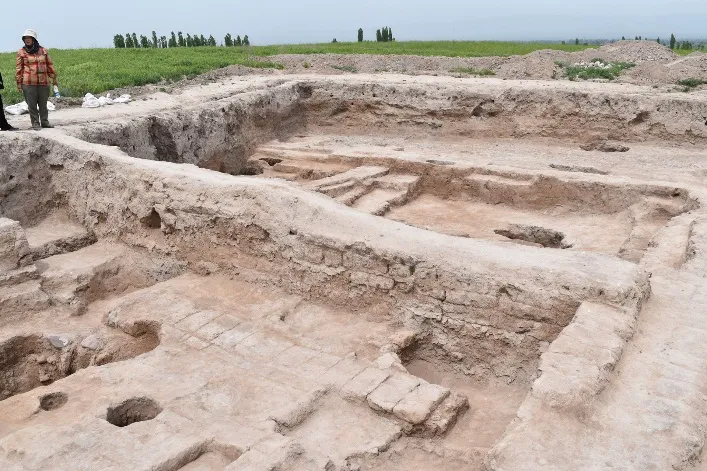The Ancient City of Suyab, once a significant Silk Road hub, lies in the territory of modern Kyrgyzstan. It thrived as a crossroads of cultures and commerce, linking the East and West. Suyab was a melting pot of various peoples, including the Sogdians, Chinese, Turks, and others. Its strategic location made it a political and economic center in Central Asia, particularly during the Tang dynasty and the period of the Turkic Khaganate.
Get your dose of History via Email
Historical Background of the Ancient City of Suyab
Archaeologists discovered Suyab’s ruins in the late 19th century. Russian explorers and historians, like Nikolay Pantusov, played a key role. The city’s origins trace back to the 6th century, built by the rulers of the Western Turkic Khaganate. Over time, Suyab saw various inhabitants, including the Chinese during the Tang dynasty. It became a cosmopolitan center, attracting traders and travelers from afar.
Suyab’s significance grew as it became part of the Silk Road network. This brought wealth and diversity to the city. It was a scene of historical importance, witnessing the rise and fall of empires. The city also served as a military outpost, defending against nomadic invasions. Its strategic location meant that control over Suyab was often contested among regional powers.
Throughout its history, Suyab experienced periods of prosperity and decline. It was an important administrative center under the Tang dynasty. However, it faced destruction during the 8th century by the Arabs. The city was rebuilt but never regained its former glory. It eventually fell into ruin, leaving behind a legacy of cultural exchange and historical significance.
The city’s ruins provide insights into its past inhabitants’ lives. Archaeological findings suggest a diverse population with complex social structures. Suyab’s residents included merchants, artisans, and officials, reflecting its role as a trade hub. The city also had religious diversity, with evidence of Buddhist, Christian, and Manichaean practices.
Today, Suyab is an important archaeological site. It offers a window into the past, revealing the interconnectedness of ancient civilizations. The city’s remains, including city walls, temples, and residential areas, are a testament to its historical importance. Suyab’s story is a narrative of cultural fusion, economic prosperity, and the ebb and flow of empires.

About the Ancient City of Suyab
The Ancient City of Suyab, located near the modern city of Tokmok, was a fortified settlement. Its ruins suggest a well-planned urban layout. The city had strong defensive walls, reflecting its strategic importance. The walls were made of mud bricks, a common construction material in Central Asia.
Architectural highlights include remnants of religious buildings and residential areas. The city’s design shows influences from various cultures, indicative of its role as a cultural crossroads. Suyab’s buildings had features typical of Central Asian architecture, such as iwans and columned halls.
Excavations have uncovered artifacts that shed light on daily life in Suyab. These include ceramics, textiles, and metalwork. The artifacts display a blend of local and foreign craftsmanship. This suggests that Suyab was a center for both local production and international trade.
The city’s infrastructure also points to a sophisticated society. Archaeologists have found evidence of water management systems. These systems were crucial for the city’s survival in an arid region. They also reflect the inhabitants’ engineering skills and their ability to adapt to the environment.
Despite its current state of ruin, Suyab’s legacy endures. Its architectural and archaeological remains continue to fascinate scholars and visitors alike. The city stands as a monument to the Silk Road’s historical significance and the enduring human spirit of exploration and exchange.
Theories and Interpretations
Several theories exist about the Ancient City of Suyab’s purpose and significance. Some scholars believe it was primarily a military outpost. Others argue that its main role was as a trade center. The truth likely lies somewhere in between, with Suyab serving multiple functions over time.
There are mysteries surrounding Suyab, particularly regarding its sudden decline. Some attribute this to the Arab conquests, while others suggest environmental factors played a role. The exact reasons for its abandonment remain a topic of debate among historians.
Interpretations of Suyab’s history often rely on matching archaeological findings with historical records. Chinese annals, for instance, provide accounts of the city during the Tang dynasty. These records help historians piece together Suyab’s past and its role in regional politics.
Dating of the site has been carried out using various methods. Radiocarbon dating, stratigraphy, and analysis of artifacts have all contributed to understanding Suyab’s chronology. These methods have helped establish a timeline for the city’s rise, zenith, and eventual decline.
Theories about Suyab continue to evolve as new discoveries are made. Each finding adds a piece to the puzzle, offering a more nuanced picture of this ancient city. Suyab’s story is far from complete, and ongoing research promises to reveal more about this fascinating Silk Road hub.
At a glance
Country: Kyrgyzstan
Civilization: Western Turkic Khaganate, Tang dynasty
Age: 6th century AD
Conclusion and Sources
Reputable sources used in creating this article:

